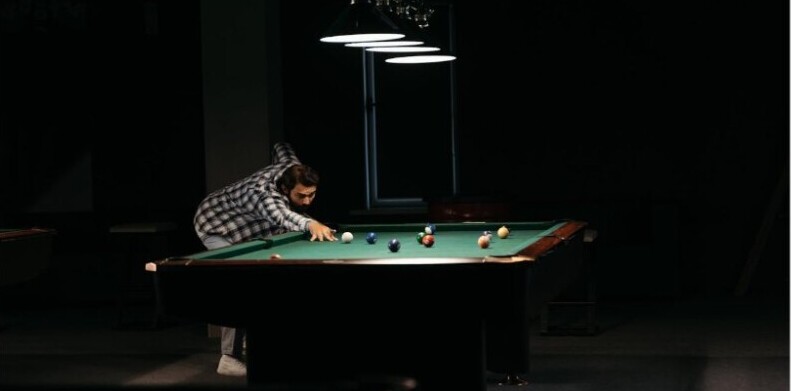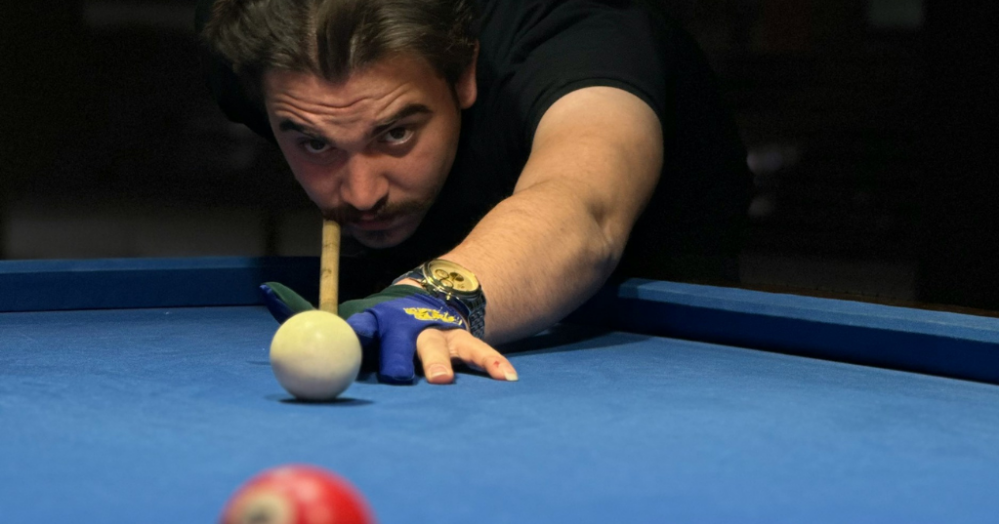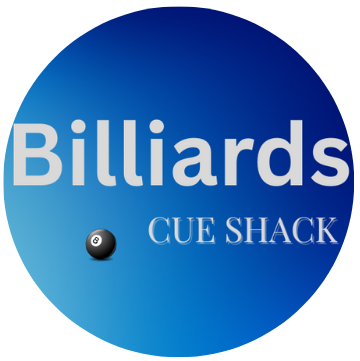 When you’re just starting out in pool, the thrill of pocketing those balls is real. It’s like, “Hey, look at me, I actually made that shot!” And that’s cool. But here’s the kicker – Once you’ve got the hang of that initial aim, shoot and pocket your ball, there’s a whole other layer to master which is cue ball positioning.
When you’re just starting out in pool, the thrill of pocketing those balls is real. It’s like, “Hey, look at me, I actually made that shot!” And that’s cool. But here’s the kicker – Once you’ve got the hang of that initial aim, shoot and pocket your ball, there’s a whole other layer to master which is cue ball positioning.
As a newbie, it’s common to channel your inner sharpshooter, focusing solely on getting balls into pockets. But when pocketing balls becomes second nature, you’ll notice that the game isn’t just about what you sink, but about what you set up for your next move. This is where cue ball control steps into the spotlight, meaning it’s the cue ball dance from one good position to the next that makes all the difference.
Trust me, when you begin shifting your attention from just making the shot to where the cue ball lands, that’s where strategic play unfolds. It’s like adding another dimension to your game. Suddenly, you’re not just sinking a ball, you’re thinking two or three steps ahead. This strategic foresight transforms everything, making you not only a tough player to beat but also someone who can control the game at your own pace.
So next time you’re at the table, don’t just jab at that cue ball. Visualize pocketing your ball, but also the cue ball’s journey afterwards. Challenge yourself to think: what will keep the momentum going on your end and make things trickier for your opponent? It’s this focus shift that will build a rock-solid foundation for everything else in pool.
Quick Recommendation: Our blog is filled with tips and materials for your billiards experience. If you're seeking a pool cue to up your pool game, we recommend LUCASI Custom Mystic Black and Curly Maple Pool Cue with Cocobola and Snakewood Banded Rings
Importance of Positional Play in Strategy
Once you’ve cracked the basic pocketing technique, it’s time to level up with positional play. This is where control over the cue ball’s final resting spot comes into play and can seriously amp up your game. Imagine setting up your next shot so perfectly that the balls might as well start purring. You suddenly have the power to make each shot seamless, one connecting directly into the next.
The real beauty of good positional play lies in its strategic advantages. Ever heard of a snooker? It’s that sneaky move where you make things complicated for your opponent by cleverly positioning the cue ball. Proper positional play turns the game into a chess match, full of calculated risks and rewards.
Think about it this way: when your cue ball isn’t just anywhere, but exactly where you planned, you’re not scrambling around, leaving your opponent easy picks. You’re running the show. It’s this control that takes your game from just hitting balls to playing strategically, setting the course of the match on your own terms.
To get there, practice imagining each shot as part of a three-act play. There’s the shot, the position you’ll reach after, and how it affects the following shot. It transforms the rack into a series of opportunities instead of potentials for blunders.
So, next match or practice, focus on mastering where the cue ball’s going next. It’s the secret sauce to making every shot count, ensuring you lead the match, rather than scrambling to match your opponent’s pace. It’s your key to turning calculated strategies into victories.
Practice and Development for Skill Refinement
 You’ve gotten the hang of sinking balls and started thinking about where that cue ball ends up. So, how do you sharpen those skills? It all comes down to good ol’ practice and maybe a touch of visualization magic.
You’ve gotten the hang of sinking balls and started thinking about where that cue ball ends up. So, how do you sharpen those skills? It all comes down to good ol’ practice and maybe a touch of visualization magic.
Think of practice as not just a repetitive routine. It’s your gateway to understanding the personality of your cue ball, the spin, the speed, the reaction when it kisses the cushion. Ever pictured exactly where that cue ball’s gonna stop after you take that shot? That’s visualization, and it’s your best friend on the table.
Focus part of your practice on the finer details. Watch how the ball behaves and get a feel for its peculiarity of action. The more you experiment with different speeds and spins, the better the control you develop. Spin especially, it can transform how shots play out. It’s not just about getting the ball moving, but knowing just how it’ll react when it hits.
With every practice, set small challenges to improve speed and spin control. Try aiming the cue a little differently each time and watch how these subtle changes affect the outcome. You want that consistency where you’re not just hoping for the best but expecting it each time you line up a shot.
Make visualization a key component of your practice. Before each shot, create a mini blueprint in your mind of the ball’s journey. It helps you anticipate different outcomes and refine your techniques, transitioning from guessing to knowing. It’s not just practice; it’s practice with purpose, turning each session into a step towards mastering the game.
Initial Practice Tips for Beginners
Starting out, it’s all about grasping the basics of cueing before you move into more complex territory. One of the best ways to do this is by focusing on straight cueing to learn how the cue ball reacts. It might sound simple, but watching the ball’s behavior on straight shots is crucial for understanding its movement.
Don’t shy away from experimenting with how you cut the object balls. Play around with different angles and see how it affects the cue ball’s path. It’s like putting a puzzle together where every piece fits a bit differently.
Using the cushions is another skill you can dive into early. Learn how the ball bounces off and use that to your advantage to control the cue ball’s journey.
Adjusting shot speed is another great way to observe and learn. Hit a little harder or softer and watch how the cue ball responds. It’s fascinating to see how a minor tweak can lead to a totally different outcome.
Keep your hands light and easy on the cue, and focus not just on making the shot, but on where the cue ball ends up next. It’s all about building awareness gradually, turning little insights into big improvements on the table.
Understanding Impact Point: Key to Precision
 Every shot you take begins and ends with understanding where you hit the cue ball. This impact point isn’t just a technical detail—it’s the soul of your shot. Whether you’re aiming for a smooth draw, a precise follow, or a dead-stop stun, the spot where that cue tip connects makes all the difference.
Every shot you take begins and ends with understanding where you hit the cue ball. This impact point isn’t just a technical detail—it’s the soul of your shot. Whether you’re aiming for a smooth draw, a precise follow, or a dead-stop stun, the spot where that cue tip connects makes all the difference.
A draw shot requires focus below the center of the cue ball. Aim a bit below the heart to pull that ball back towards you, giving you control over the position for your next play. It’s like hitting a mini-rewind button.
On the flip side, for a follow shot, aim above the center to nudge the cue ball forward after impact. This keeps the momentum flowing forward, perfect for setting up your next shot in one seamless motion.
Need a quick stop for the cue ball? A stun shot involves hitting right at the center, halting your ball in its tracks. This is great for when you want precision over spectacle.
Feeling a little adventurous? Adding English, or side spin, can change the way shots align with rails and tuck around obstructions. A tap to the right or left of the center alters the course. With a bit of practice, it gives more freedom in navigating tight spaces.
Dedicate practice time to experimenting with these different impact points. It’s like learning a new vocabulary of shots that speak volumes on the table. Warm-up with these different strikes, observe the outcomes, and let your intuition grow sharper alongside your skill.
Quick Recommendation: Our blog is filled with tips and materials for your billiards experience. If you're seeking a pool cue to up your pool game, we recommend LUCASI Custom Mystic Black and Curly Maple Pool Cue with Cocobola and Snakewood Banded Rings
Advanced Techniques for Mastery
You’ve conquered the basics, you’re feeling pretty confident, and now you’re ready to take it up a notch. This is where advanced techniques come in, adding a new twist to your game with spin control and imaginative shots.
When it comes to introducing spin, think of it as the secret sauce that can transform your shots. Start simple, using side spin—to the left or right of center—and observe how it manipulates the cue ball’s path. This adds layers to your positioning options.
Explore the wonders of the sidespin draw or follow, which guides the cue ball on a curved path. It’s a thrilling way to navigate clusters, opening up play like never before.
And then there’s the magic of bank and kick shots. Using the rails to reposition the cue ball with precision takes skill, but once you get the hang of it, it’s a game changer in terms of strategy.
Want to really push your limits? Try incorporating swerving shots or even advanced moves like jump and massé shots. These are tricky and a bit risky but can be the ultimate tool in your arsenal for those high-stakes games.
Remember, with complex techniques, patience is important. Spend time experimenting with different levels of difficulty using drills that introduce obstacles or force creative problem-solving. You’re not just learning trick shots, you’re mastering the art of making those tricks part of your strategic toolkit.
Practice consistently, tackle different scenarios, and soon enough, you’ll see these advanced techniques paying off on the table, making your play seamless and sophisticated.
